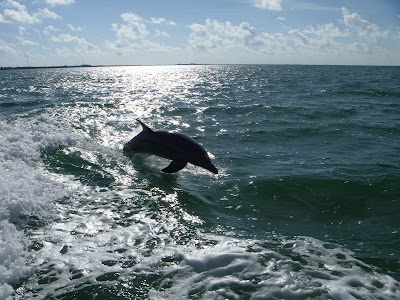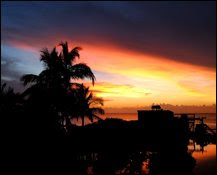A team of FWC Restoration Ecology scientists have established a new Staghorn (
Acropora cervicornis) Coral Nursery at Tennessee Reef this past May. Pictured above, Kerry measures newly-epoxied coral fragments to monitor growth in the "block nursery". KML's staff divers have assisted with the project when available.
A portion of the coral fragments are suspended above the ocean floor on branches of PVC in the "tree nursery". Regular visits to the Nursery are necessary to check on fouling, record growth rates and make any repairs to the growing corals.
If all goes well, 400+ new corals will be out-planted from the nursery to nearby reef habitat in the Spring of 2013. FWC scientists will continue to monitor survival and growth of the new colonies in the coming years.
Dave and Jessica hanging coral fragments on the tree nursery
Over the past 2 years, the team has propagated coral clippings (fragments) from donor colonies in the Middle Keys, and carefully tended them in a Nursery south of Vaca Cut. They have transplanted nearly 800 new colonies to nearby reef habitat this spring, which they will continue to monitor in the coming year.
Kate takes time out to watch a pygmy octopus floating past on the Sargassum weed
Acroporid (staghorn and elkhorn) corals along Florida's coast and throughout the Caribbean have experienced severe decline since the late 1970's, in part due to hurricanes, disease, over-fishing and thermal stress. These corals were listed as "threatened" under the Endangered Species Act in 2005. The Coral Nursery project, funded by the 2009 American Recovery and Reinvestment Act, is a regional effort to aid in the recovery of the populations of these threatened corals. This has been a collaborative effort with Mote Marine Lab, The Nature Conservancy, the Coral Restoration Foundation, and NOAA, among others.
For more information on the project contact: kerry.maxwell@myFWC.com



























